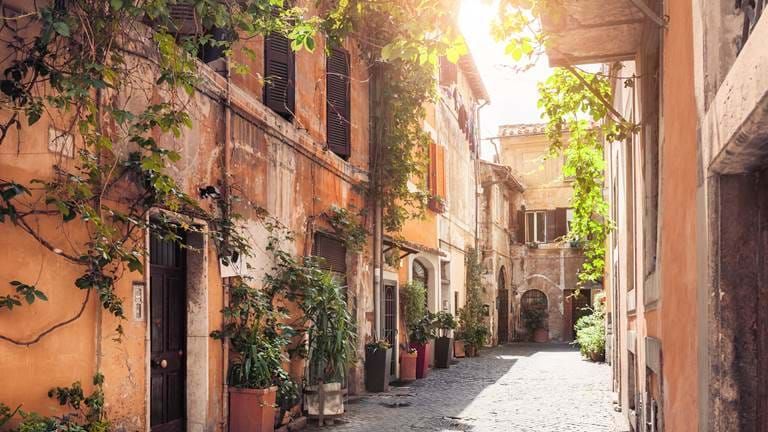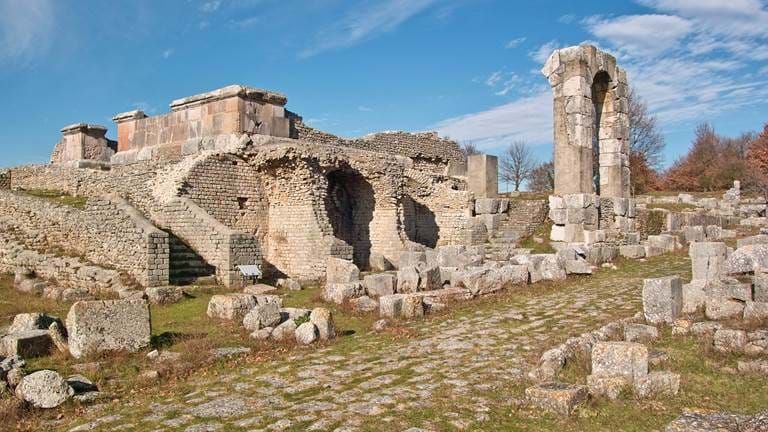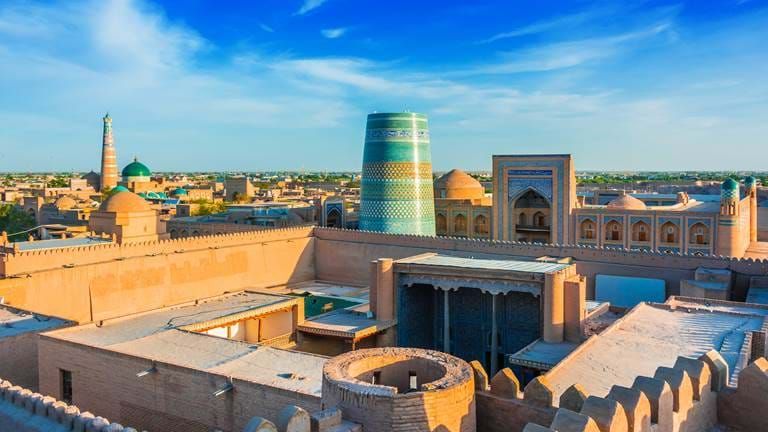Ultimate Ancient Road Trips

If you’re considering an archaeological tour, why not treat yourself to an ancient road trip? We offer a series of itineraries where the conduits are important ancient roads. Journeying across these ancient arteries brings antiquity to life both in the sense that we are able to relive famous events which occurred on these roads and because we follow the same tracks trodden millennia earlier by our ancient antecedents. With the viae acting as a thread through these odysseys, we follow the course of these antique roads, walking on ancient tracts and crossing ancient bridges, all while admiring the Romans’ fantastic engineering skills. Along the way, we see spectacular cities and sites once united by imperial thoroughfares and sharing goods, as well as ideas and a common sense of belonging to the same empire.
Join us on a journey to explore the glorious heart of Italy or explore the way in which Rome subdued the Italian peninsula through its most famous road. Alternatively, follow routes leading out of Rome and Italy to major provincial centres such as Arles and Byzantium. En route, you will explore antiquity as it would have been experienced at the time and will re-live history as it happened.
The Via Appia
Enjoy a memorable journey along Rome’s most ancient road as you travel from Benevento to the Eternal City on our Along the Appian Way tour, hearing about famous events which took place on this road, such as the assassination of Cicero, the murder of Clodius and the crucifixion of 6,000 of Spartacus’ men along the road from Capua to Rome. On the way, you will explore the incredible engineering which went into constructing this, the regina viarum or queen of roads, and will consider the way in which this road allowed Rome to subdue and ultimately unite their Italian neighbours. This odyssey down the UNESCO-listed road takes you to a number of a world-class sites, including the site of Benevento, the mithraeum and amphitheatre at Capua, and the evocative intact sections of the road outside of Rome, which houses a number of remains including the Dominus Quo Vadis Church as well as the Circus of Maxentius.
Additionally, our Hidden Rome tour also travels down part of this legendary road. On this tour, you will explore some of its renowned villas such as the villa of the Quintili and villa of Emperor Maxentius. There will also be a visit to the Roman baths of Caracalla, which were once Rome’s second-largest baths and could accommodate around 1,600 bathers.


The Via Flaminia
Traversing the Apennines, the Via Flaminia remains, to this day, the best way to travel through central Italy. Originally built in the 3rd century BC in order to facilitate the transport of grain to Rome, it crosses through some of the most spectacular parts of the Italy – including the spectacular hilltop cities of Umbria, such as Perugia, Assisi and Spoleto. Our tour begins at the end of the road, at ancient Ariminium, where you see a number of Roman remains, including Tiberius’ bridge and Augustus’ triumphal arch. On the way to Rome, you will visit several bridges and sections of the road that show off Rome’s engineering capabilities and there are several private visits to ancient sites, including the Etruscan Hypogeum of the Volumni outside Perugia, as well as the Domus of Propertius and of the Lararium in Assisi. The Via Flaminia ends in Rome, where you walk down the Via, now called Via del Corso, to the Porta del Popolo, following the footsteps of your ancient counterparts.


The Silk Road
Explore the sites and cities of the Silk Road on our extended tour of historic Uzbekistan. This iconic road once ran from China to Europe, with Uzbekistan at its heart. The steppes, deserts, mountains, and blue-tiled cities tell stories of trade and conquest, and you’ll follow in the footsteps of those who’ve travelled these routes for thousands of years. Discover four UNESCO-listed sites such as Khiva and Samarkand, explore the Bibi Khanym Mosque and tour the mighty fortresses of Ayaz Kala.


Via Egnatia
Named after the Proconsul of Macedonia, Gnaeus Egnatius, the Via Egnatia was a major thoroughfare through the Eastern Part of the Roman Empire, linking the major cities in Illyrium, Macedonia and Thrace, from Dyrrachium in Albania, through to Thessalonika and ultimately to Byzantium, which was later transformed into Constantinople. Built in the Second Century BC, the road was linked to Rome, via the Via Appia which travelled to the Eternal City from Brundisium and which lay directly opposite to the Via Egnatia. Many historical events took place along this road, most notably the Roman armies which travelled along it during the civil wars, first between Caesar and Pompey and then between Octavian, Antony and the Conspirators. Renovated under Trajan, the road continued to be important in the late antiquity, when it became one of the most important thoroughfares in the reign of Justinian.
Archaeology Tours
NEWSLETTER
Opt-in to our email newsletter and hear about new offers first – view our privacy policy for details.


